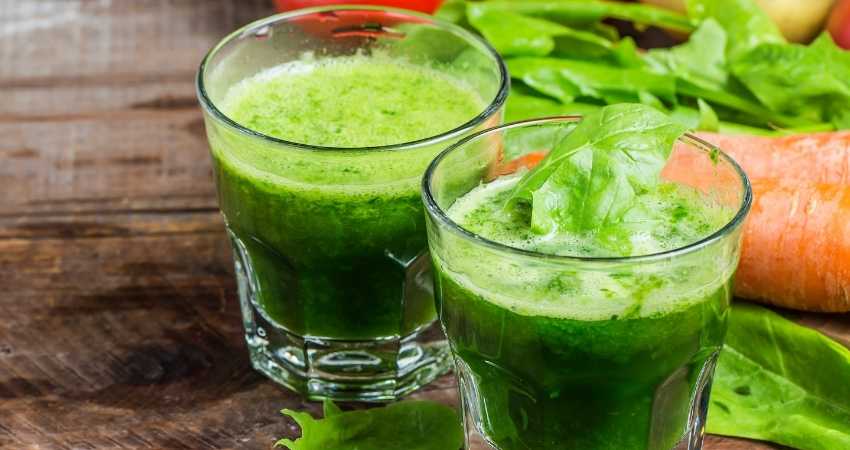How To Freeze Spinach
One thing many people notice about spinach is how quickly it goes bad. Looking for the solution to this problem you may be asking yourself, can I freeze spinach?
Spinach can be frozen and remain in the freezer up to one year. It should be cleansed and completely dried before placing it in a storage bag and into the freezer. If spinach is stored in the freezer for more than nine weeks, it has to be blanched prior to freezing.
However, there are a few things you should look out for. To make sure that you are taking all the important steps and that your spinach will be every bit as quality as it was when you froze it keep reading this article1.
How to Freeze Spinach

As a Certified Health Coach many clients ask me about food storage including spinach. Also, I purchase and consume it almost every day. Therefore, I have researched this topic in the past and present. Let’s examine the freezing method closely.
When freezing spinach you can use any type you prefer. There are few extra steps you should take depending on which type of spinach you are using.
If you are using fresh spinach make sure to wash it thoroughly a few times. This will get rid it of any kind of dirt, bugs or other things you don’t want. Prepackaged spinach should be fine once you rinse it lightly.
If you decide to use spinach straight from your garden make sure to pick it in the morning as this will make it crispier. To take full advantage of your spinach cut it right above the ground. Before you take all steps that were mentioned above remove any browned or whittled leaves.
Once your spinach is clean you need to dry it thoroughly. This is an important step because if there is any moisture left on the leaves, they will be more prone to freezer burn.
To dry it properly, leave it on a rack or in between layers of paper towels for a few minutes. If you are in a rush, another option is to use a salad spinner to dry the leaves.
Disclaimer: Some of links in this article are affiliate links which means I may earn a small commission at no extra cost to you. As an Amazon associate I earn from qualifying purchases.
A salad spinner is one of those gadgets you’ll wonder how you got along without one before. Amazon has affordable ones, salad spinners.
After your spinach has been dried and cleaned, it is ready for the freezing process. If you plan to use this batch of spinach over a longer period of time, like over nine weeks, it’s a good idea to blanch it first.
Blanching helps to preserve the flavor, color and texture. Vegetables that are not blanched will continue to age in the freezer.
How to blanch spinach:
- Choose the amount of spinach.
- Boil a large pot of water.
- Wash the spinach while waiting for the water to boil.
- Submerge all the spinach in the boiling water without over crowding the pot.
- Boil for two minutes.
- While waiting for the spinach to boil, fill a large bowl with iced water.
- After two minutes of boiling, immediately transfer the spinach into the cold water.
- Let the spinach cool in the ice bath for two minutes.
- Remove it from the ice bath, drain it and thoroughly dry.
- Place the dried spinach into any container you like and remove as much air as possible before sealing. This will help prevent a freezer burn.
- Label the date on your container and freeze up to one year.
The two minute boiling time must be precise. Less time stimulates the activity of enzymes which will break down the spinach while frozen. Too much time will remove too much flavor, color and nutrients ((National Center for Home Food Preservation: Freezing)).
After boiling the spinach, you’ll probably notice the water may have turned a greenish color. The colored water has some of the lost nutrients. You may want to use this water to cook rice or quinoa as another side dish.
In addition, you can also blanch your spinach by steaming instead of boiling them in water. Steaming will help retain more of the nutrients lost during the process. If you choose to steam, add one more minute. Instead of two minutes for boiling, steam for three minutes2.
The video shows how to blanch vegetables including spinach.
Can You Freeze Spinach Without Cooking It?
If you know you will use all of your frozen spinach over a shorter period of time, like less than nine weeks, you can freeze your spinach raw. One thing to keep in mind is spinach frozen raw is unappropriate for salads. This is because freezing will break down cellular walls making it much softer.
This kind of spinach is more appropriate for cooked meals, soups, or smoothies. It is extremely convenient because it will preserve your spinach and doesn’t require much time. The only thing you need to do is take the amount you want out of the freezer and add it to your desired dish.
How to freeze spinach3 without blanching:
- Choosing the amount of spinach.
- Wash the spinach and thoroughly dry it.
- Place the spinach in your container of choice.
- Remove all the excess air to prevent a freezer burn.
Another thing you can do is to puree the spinach before you freeze it.
- Clean the spinach.
- Cut the spinach into smaller pieces.
- Place it inside a food processor and add a little water.
- Place the spinach into zip lock freezer bags or a container of your choice.
- Remove as much air as possible.
If you plan to use this spinach in soup, sauce or a smoothie, another option is freezing the puree inside an ice tray. This makes convenient size serving size to use while cooking.
How To Freeze Spinach For Smoothies

The easiest way to to freeze spinach for smoothies is to puree it like described above and make frozen cubes. The following are the steps:
- Add a bunch of fresh spinach into a food processor or high speed blender.
- Add some water and mix at high speed.
- Add extra liquid as needed if it’s too thick.
- Pour the mixture into an ice cube tray and freeze until solid.
- Remove the spinach cubes and store them into a freezer bag.
When it’s time for your next smoothie, add one or two cubes to start. Next time adjust the amount of cubes to make it the way you like. Feel free to do this with any other greens or a mix of greens like kale, Swiss chard or arugula.
Is Frozen Spinach Safe to Eat Raw?
Another question many spinach lovers have regarding the freezing process is whether it’s safe to eat spinach raw after freezing. It absolutely is and many people recommend it whenever a recipe calls for raw spinach. This is best manifested in the fact that frozen spinach is much easier to measure.
In fact, many recipes use raw spinach as a starter for the dish. The most popular recipes that call for this type of spinach are frittatas, quiches, soups, sushi and spinach dips. Many chefs argue using raw spinach will have a more prominent flavor and be more nutritious.
Another positive thing about frozen spinach is you can enjoy the delicious flavor without having to deal with the slimy consistency many spinach lovers don’t like.
Perhaps the most loved advantage of this process is how convenient it is to freeze spinach. The only thing you need to do is simply take your spinach out of the freezer.
Even if you’re freezing the spinach yourself, the preparation time you’ll need to set aside is arguably less. It takes much longer washing, drying and chopping up fresh spinach every time you crave it in your dish.
However, if you’re worried about consuming raw spinach, you can heat it up for a short amount of time to ensure nothing is contaminated.
By the way, if you’re freezing spinach, why not broccoli too. The process might be different though, find out how in my blog post, This Is How To Freeze Broccoli.
The Best Spinach for Freezing
If you’re purchasing your spinach at the local supermarket, find out if they have any locally raised for the freshest flavor. If they don’t pick one organic, if they have them. Regardless of the type of spinach, carefully check the leaves prior to buying4. Make sure the leaves look fresh and young. They shouldn’t appear limp, curled, wrinkled or yellowed5.
If your supermarket doesn’t provide locally grown, do some research and find out if there’s a farmer’s market close by. You’d be surprised to find out there’s more of them around than you realize. Some towns will set up a collection of them on the weekend or a certain day of the week.
When you’re picking at the farmer’s market, don’t assume all the spinach is fresh, inspect them the same way you would at the supermarket.
If you have any questions to ask me about this article don’t hesitate to comment below or email us. You can find an email on our contact page.
Read Next – More Food Storage
How Long Does Spinach Dip Last?
A Guide To Pomegranate Juice Storage And Shelf Life
A Guide To Ripening And Storing Strawberries
Picked Early? A Guide To Blueberry Ripening
- National Center for Home Food Preservation: Freezing Greens (Including Spinach) [↩]
- National Center for Home Food Preservation: Freezing [↩]
- Washington Post: How to freeze fresh vegetables while preserving their best qualities [↩]
- Fruits and Veggies: Spinach [↩]
- Colorado State University: Colorado Spinach [↩]
